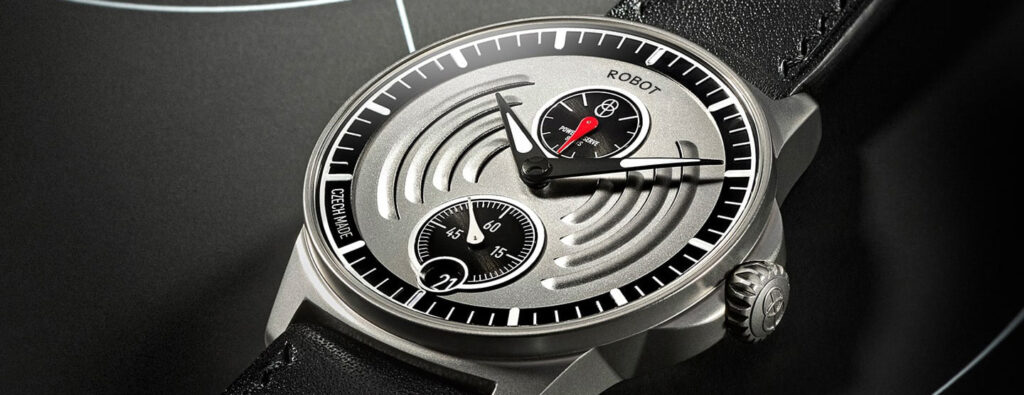Audemars Piguet
The Audemars Piguet Royal Oak & Francis Ford Coppola’s The Godfather
Audemars Piguet
The Audemars Piguet Royal Oak & Francis Ford Coppola’s The Godfather
The Immortals
The 1970s was a chrysalis of upheaval and change. It was characterized on one side by the libidinous abandon of disco culture and, on the other, by a permanent shift in prevailing ethics with the rise of feminism and the demand for gender equality. But of the various things born into this era, it was a watch and a movie from 1972 that would forge the greatest legacies. So much so that one could say they remade their respective genres and the world around them in their own image.
That watch was Audemars Piguet’s Royal Oak. And that film was Francis Ford Coppola’s The Godfather. A full half century later, on the occasion of their shared golden jubilee, the Royal Oak and The Godfather have left an impression on human history so significant that the entire culture of cinema and the very definition of what a luxury watch is today have been irrevocably, irrefutably and inimitably shaped by them. Fifty years on, the very words “luxury timepiece” invariably conjures an integrated bracelet sports watch. It is this type of watch that the Royal Oak forged the genetic blueprint for. And the Royal Oak is, to this day, still the first and last word in this category. Similarly, The Godfather is revered as the single greatest American film ever made and has defined the modern operatic crime family saga to us.
But the parallels between the film and the watch continue. Both were acts of extraordinary audacity. Both emerged from challenging times and had troubled beginnings. Both are as fresh and relevant in 2022, as the day they were born 50 years ago. Both are such amazing expressions of human creativity that they have transcended their own genres. For the truth is, the Royal Oak is not just a watch, but also the greatest act of horological design ever created. In the same way, The Godfather is not just a film, but it is also the expression of human drama and tragedy in the manner of the Greeks and Shakespeare, here in the most perfect narrative form possible. Both were acts of incredible rebellion. But both are so eternal in their appeal that they can now be considered immortals. This is the story of how that watch and that film went from iconoclasts to icons.
Dare, & Dare Again
Much has been made of Audemars Piguet’s financial state in 1971. To say that the manufacture — considered to be one of the holy trinity of Swiss watch brands — was reeling from the onslaught of the Quartz Crisis two years after the launch of the Seiko Astron is debatable. To be fair, the full extent of the devastation resulting from the flood of cheap and accurate quartz watches from the East, would not be felt for several more years. To say that Audemars Piguet was teetering on the brink of financial ruin is also more populist lore than reality. Says Michael Friedman, AP’s head of complications, “If you look at the performance of Audemars Piguet throughout the ’70s and ’80s, the period where the Quartz Crisis badly affected the mechanical watch industry, we were largely insulated from it because of the creation of the Royal Oak and also the introduction of the highly ambitious ultra thin perpetual calendar [reference 5548] in 1978.”
Says Audemars Piguet’s CEO, the legendary François-Henry Bennahmias, “You could say the inspiration for the Royal Oak was Audemars Piguet responding to what we sensed was a prevailing change in society. This speaks to the vision of our managing director at the time, Georges Golay, who, like the greatest of leaders, could sense a big shift happening in the watch industry and beyond. He realized that consumers were changing and didn’t want to simply purchase the same watches that people had been making for half a century. He recognized the need for something new, modern and daring. Of course, this takes huge courage but that is one of our core values. We would do this again in 1984 with the creation of the Royal Oak Perpetual Calendar [ref. 5554], and again in 1993 with the creation of the Royal Oak Offshore. This is the way we have always been at Audemars Piguet. Some people say we are audacious, and we are. But audacity without purpose and strategy is meaningless. What is important is to create and be bold at the right time before anyone else sees what’s happening.”

The sketch that became the Audemars Piguet Royal Oak ref. 5402 ST

A prolific painter from his teenage years, Gérald Genta would produce at least one watch design every day, amounting to 100,000 timepieces throughout his career
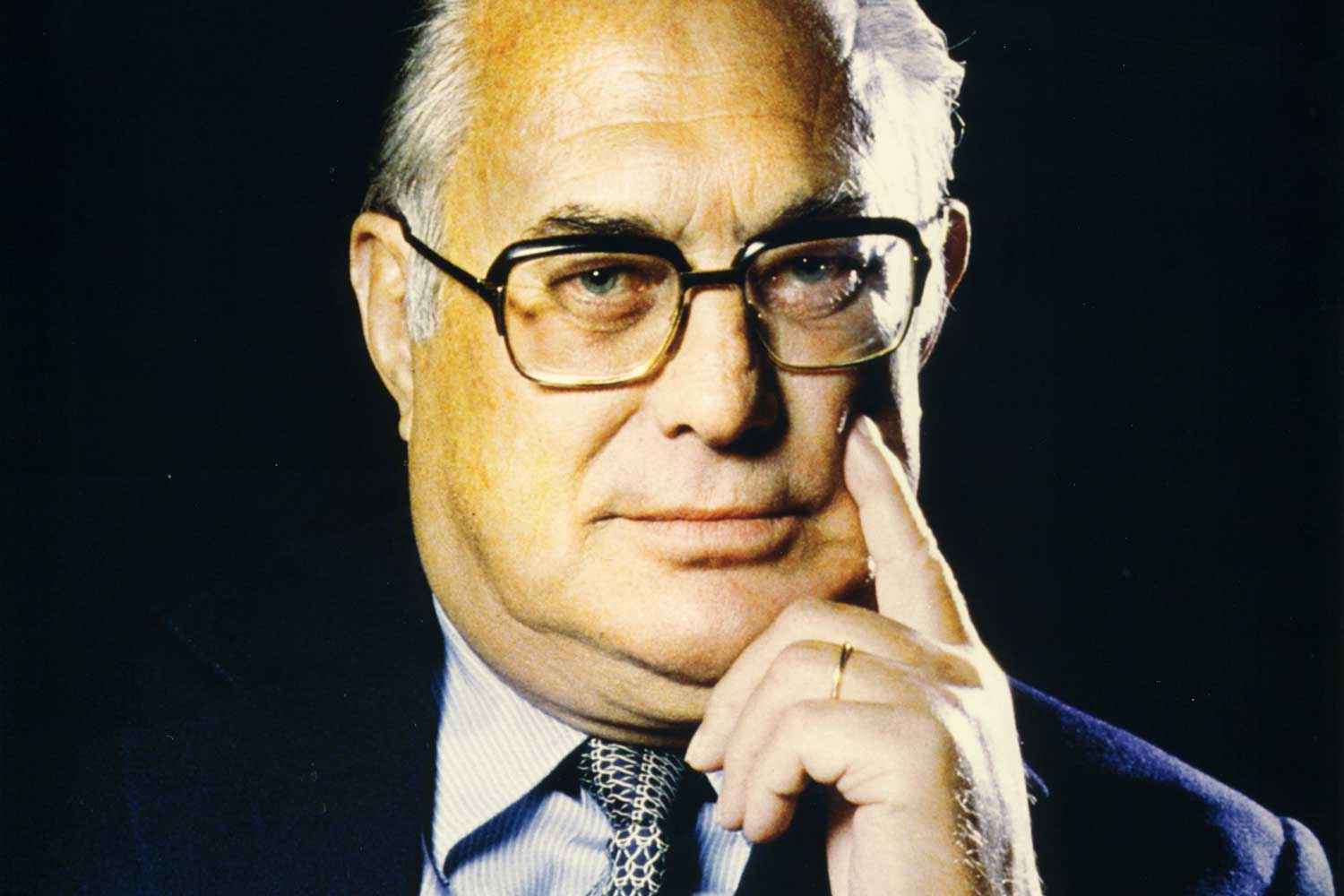
Georges Golay, the boss of Audemars Piguet (known as “Uncle George” to those closest to him) and a true brilliant leader during over the course of the Quartz Crisis

CEO of Audemars Piguet, Francois-Henry Bennahmias
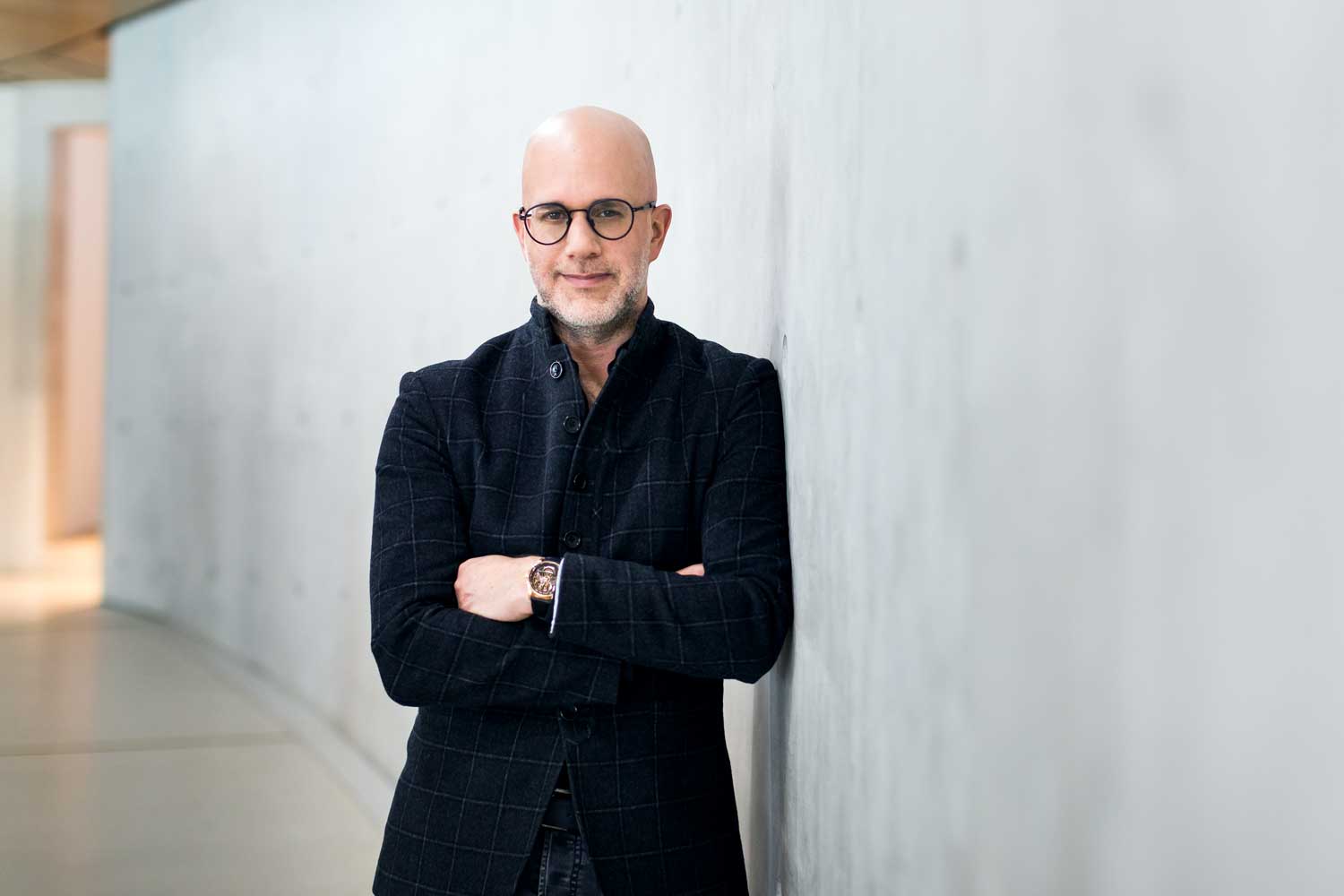
Head of Complications at Audemars Piguet, Michael Friedman
Says Friedman, “In the context of the ’70s, well through the ’90s, the Italian market was considered to be the key tastemakers for watches. So Georges Golay would have paid attention to their request.” Also, in the context of this time period, much in the world had changed. The popularization of air travel combined with the development of certain key destinations like the South of France, the Italian Riviera, Capri, in summer and places like St. Moritz and Gstaad in winter had created an international playground for the global elite.
Some of these families came from Italy, such as the mythical Agnellis. These individuals would spend part of their lives at play in the water, on their boats and on the ski slopes, then attend the most formal business meetings and the most glamorous dinners and black-tie balls. But no one had created a watch that would be equally at home in all these situations. Looking back now, there was clearly a powerful zeitgeist, and AP were the among the firsts to recognize and respond to it.
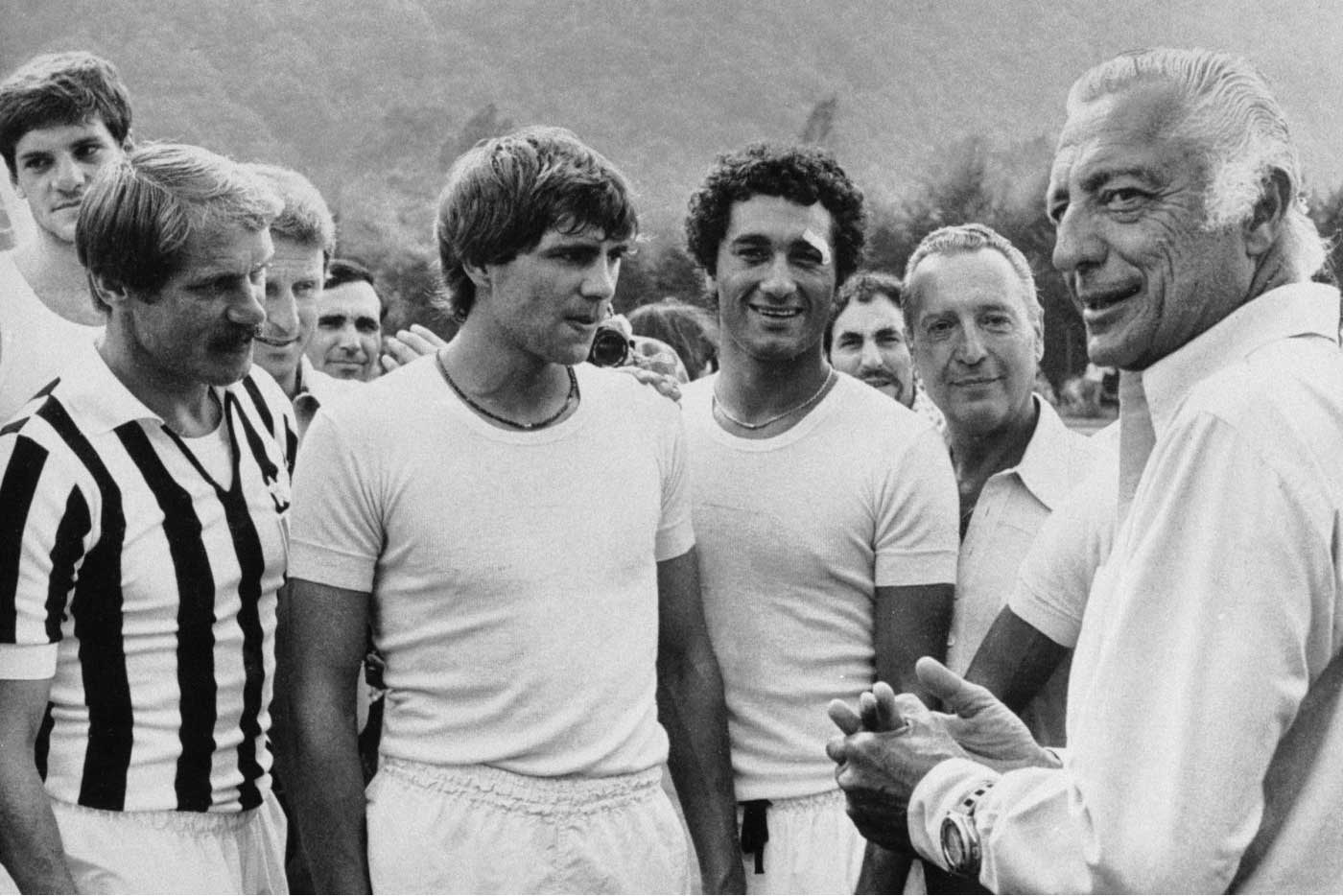
Gents from the Juventus Football Club, with club patron Gianni Agnelli, who is seen here wearing an Omega PloProf Seamaster Professional 600m ref. 166.077, over his cuff
Looking at his work such as the Constellation, it is clear that he was already more fixated by shaped watches and was attempting to integrate the bracelet of the watch to the body to form one entity. But it was the Royal Oak that would allow him to abandon all the past constraints of wristwatch design and create something altogether new. He recalls Golay ringing him at 4pm to say, “Mr. Genta, I need a steel sports watch that has never been done before. I want it to be something totally new and waterproof. And I want the design by tomorrow morning.” Genta hung up the phone and immediately set to work. As he explains, “I designed it overnight, and my idea was to replicate the system of the scaphander’s helmet on the watch case. With the eight screws and with the joint visible on the case’s exterior. So I was given the ‘green light’ straightaway to begin work on the prototype. I completed the prototype myself within a year.”
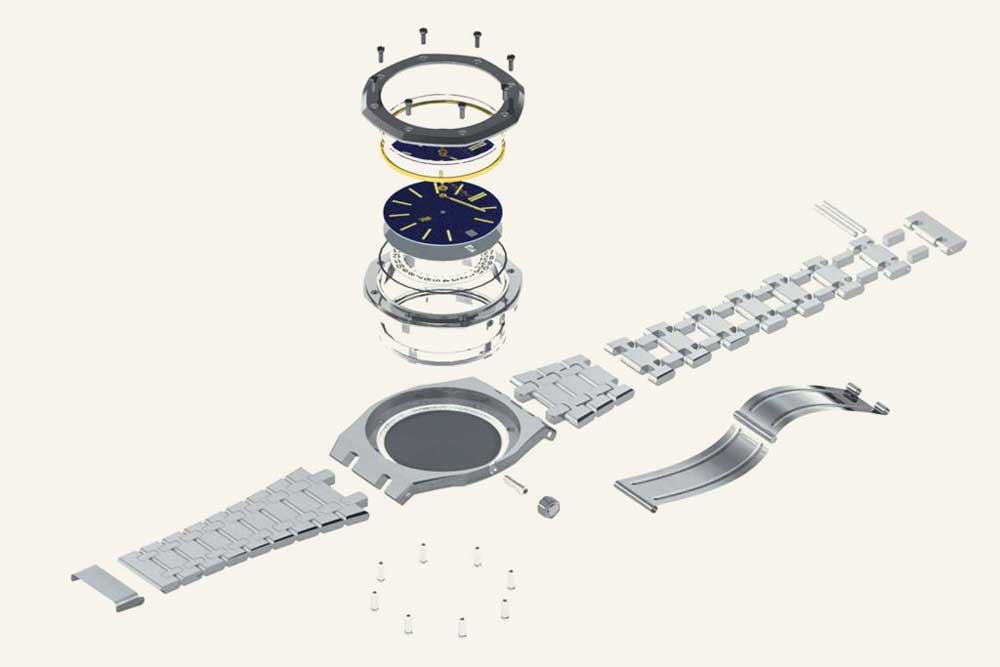
The Royal Oak’s eight-sided bezel and exposed screw design has become one of the most recognizable in modern luxury
At 39mm in diameter, it bristled with virility. Its unmistakably shaped octagonal bezel and faceted case made it recognizable from 100 yards. The elegance of its sublime petite tapisserie dial was augmented by lithe thin minimalistic baton shaped markers and hands. Featured at six o’clock was a combined act of Zen reductionism and Pop Art, in addition to the full signature of the brand “Audemars Piguet” written in font, there was a hyper stylized applied gold logo in the form of the letters “AP.” Says Friedman, “It’s only Audemars Piguet that could do this.”
It was a touch that was wonderfully modern in that Audemars Piguet was referring to itself on its dial with the same nickname used by collectors. It was a wonderfully fresh, fun and modern touch. All the coolest playboys had nicknames, like L’Avvocato for Gianni Agnelli or ‘Baby’ for Francisco Pignatari. Similarly, Audemars Piguet used a casual way of referring to itself by its nickname, perfectly capturing the casual cool essence of the sports chic generation.
Then, there was the marvelous bracelet made for Audemars Piguet by Gay Frères, which flowed dynamically into the watch head so they became one. Says Friedman, “The beauty is you can recognize a Royal Oak from the clasp and bracelet side; that’s how iconic the design is.” Then, there are those eight marvelous visible screws in white gold. These screws that traverse the bezel to the back case as well as the visible rubber gasket between the bezel and case were all nods to the Bauhaus idea of form following function, with exposed structural elements now becoming part of the design.
Says renowned watch collector and GPHG jury member Ahmed “Shary” Rahman, “The screws in the bezel represented one of the most ingenious elements of the Royal Oak’s brilliant design in that they are hexagonal, meaning that it is impossible to turn them. In addition, their screw slots are all perfectly aligned. Immediately, you ask yourself wait, ‘How is this possible?’ Until it dawns on you that the screws are secured in the back of the watch using round fittings. Meaning that the slots on the front are purely decorative.” But it takes you a moment to understand that, and this is one of the wonderful optical illusions about this watch. Rahman continues, “The other revolutionary element about the Royal Oak’s design is this incredible contrast between the aggressively shaped muscularity of the watch at 39mm, counterpointed by the incredible slimness of its profile at only 7mm in thickness thanks to the famous Calibre 2121. The slimness of the watch is what really gives it such extraordinary style and is the ‘chic’ in the term sports chic.”

The Royal Oak bracelet was designed for Audemars Piguet by Gay Frères, which flowed dynamically into the watch head so they became one; the bracelet to this day remains such an icon that you can recognize a Royal Oak from the clasp and bracelet side
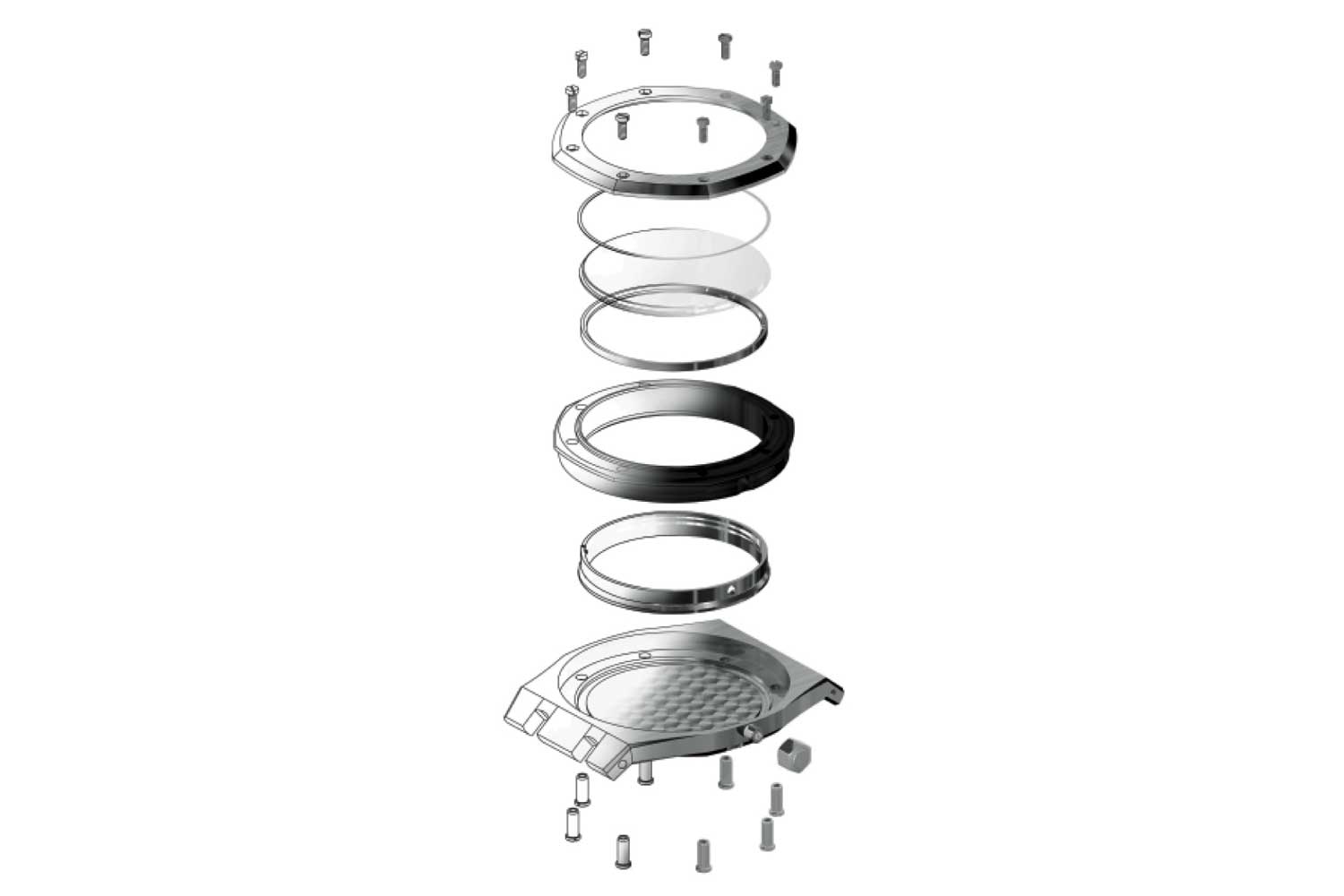
The eight visible white gold screws of the Royal Oak traverse the bezel to the back case as well as the visible rubber gasket between the bezel and case; it nods to the Bauhaus idea of form following function, with exposed structural elements now becoming part of the design
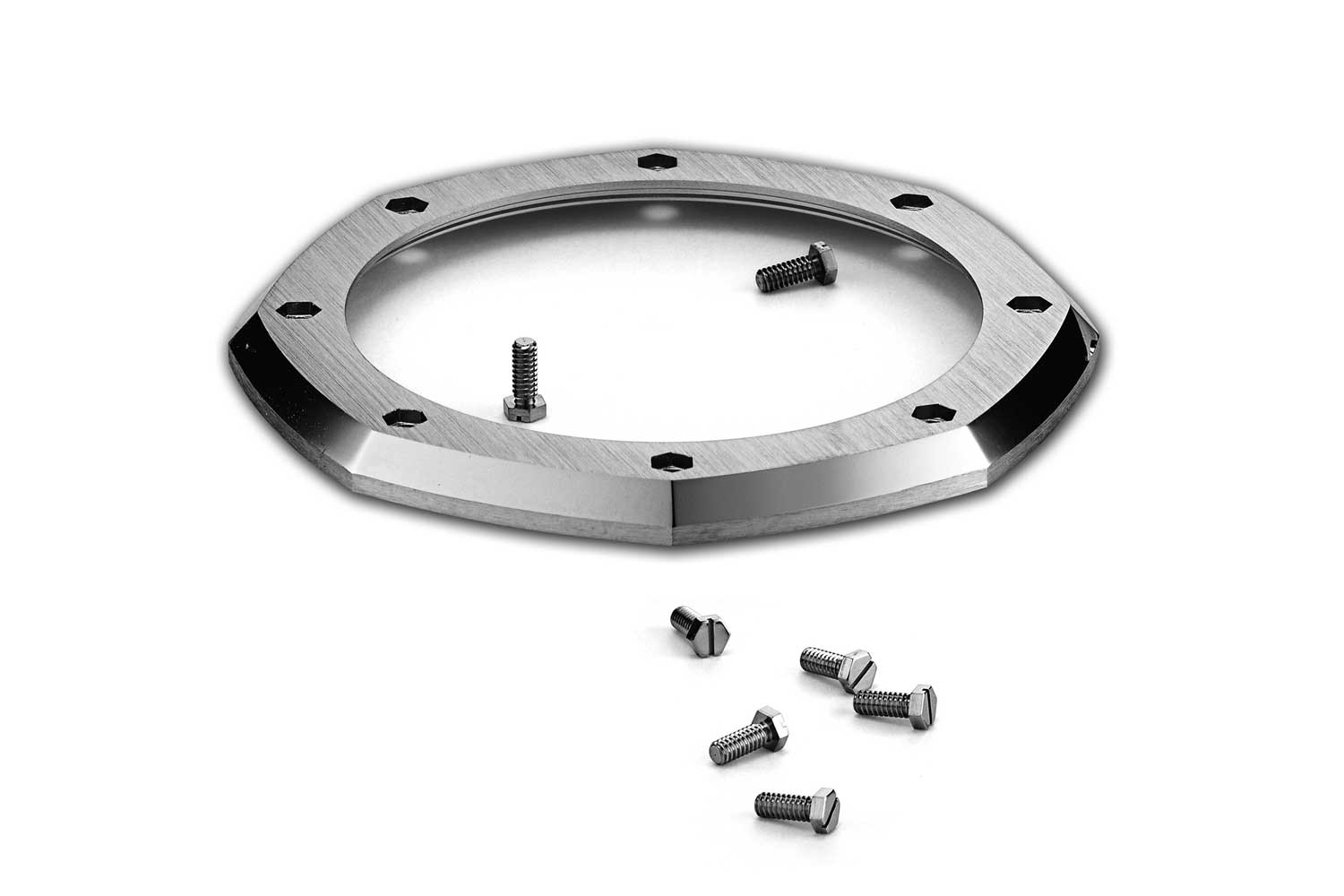
The bezel of the Royal Oak is recognizable even in isolation
The Unrefusable Offer
By the time The Godfather came to Francis Ford Coppola, Paramount had exhausted every conceivable other option. Mario Puzo’s script based on his blockbuster of the same name had gone out and was rejected by every director in Hollywood. Truth be told, the studio’s interest in making the picture was anemic at best, as it had been bitten in the ass by The Brotherhood, a 1968 Kirk Douglas mafia vehicle that had emphatically bombed at the box office. But the Godfather project had two things going for it. The runaway success of the highly entertaining, albeit tawdry book released in 1969. And a young dashing handsome former actor named Robert Evans that gutted out his way to becoming Paramount’s head of production who loved it. The idea was to make a fast, cheap and easy adaptation set in contemporary Philadelphia at a minuscule budget of 2.5 million dollars.
Evans had convinced the gun-shy Charlie Bluhdorn, Paramount’s owner, that the failing of The Brotherhood stemmed from its largely Jewish team and that The Godfather would work if he could find an “authentic” Italian American director and cast. When The Godfather’s script landed at Coppola’s production office, American Zoetrope, the director was teetering precariously on the brink of bankruptcy. He had created Zoetrope as the ultimate outlier enclave, a band apart from the Hollywood studio system, and filled it with his fellow USC/UCLA film school graduates like Steven Spielberg and George Lucas. He had accepted money from major studios to develop projects, but they had lost confidence in this clearly bohemian outfit and were calling back their advances. Coppola’s decision to undertake The Godfather was simply to keep Zoetrope and his personal life afloat. He stated in the 2017 The Godfather Reunion at the Tribeca Film Festival, “I had two children with one more on the way. I was totally broke.” Basically, The Godfather arrived as a desperately needed lifeline to drag himself away from the shoals of impending financial disaster.
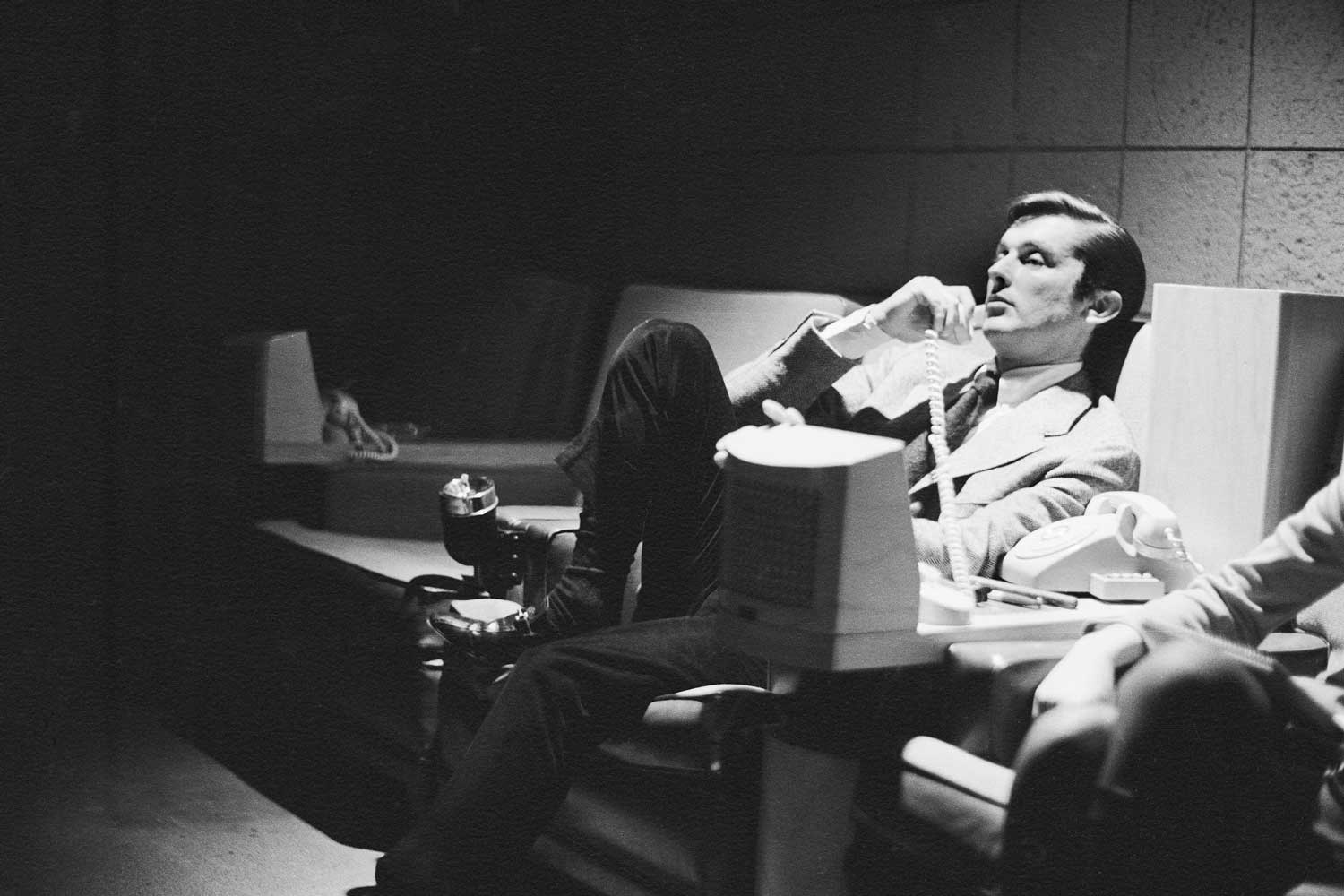
Robert Evans in a Hollywood screening room in 1968, two years after he was plucked from relative obscurity to run production at Paramount (Image: Alfred Eisenstaedt/The LIFE Picture Collection)
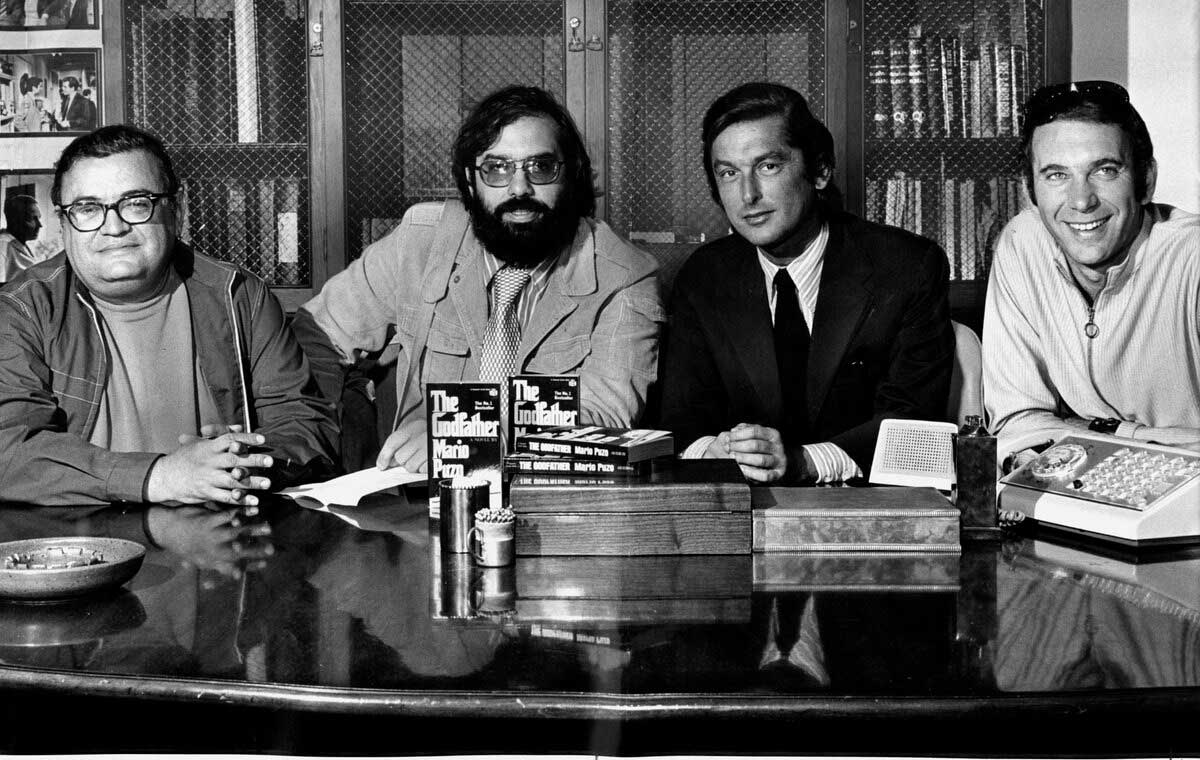
(L-R) Screenwriter Mario Puzo, director Francis F. Coppola, Paramount’s head of production Robert Evans and producer Albert S. Ruddy at the announcement event held to announce the filming of The Godfather
Brando the studio disliked for a different reason. The first truly famous method actor whose saturnine beauty in A Street Car Named Desire is etched forever into the world’s collective memory had, by his late 40s, become an anathema to Hollywood due to his successive streak of bombs and his notorious antics that often delayed production and caused budgets to run over. But Coppola could not be swayed on either front and finally when the studio saw rushes of Pacino in The Panic in Needle Park, his first film role, it was enough to convince them. Brando, on the other hand, was an altogether different problem.
Coppola, under the guise of improvisation, videotaped Brando transforming before his eyes into Vito Corleone. He says, “I went to his house. He walked into the room. He was this beautiful man with long blond hair in his late forties. I watched him put shoe polish in his hair and stuff tissue paper into his mouth to create the Don’s famous jawline. The phone rang and he answered it in Vito Corleone’s voice.” The transformation was incredible. Showing the footage to the studio, Coppola was still told that Brando would have to put up a one-million-dollar bond as a guarantee against filming delays and budget overruns due to his shenanigans and he would have to do the role for nothing. “I accept!” shouted Coppola emphatically. Then, Coppola had to convince Evans to make the film in 1940s New York instead of modern-day Philly, a seismic shift that changed the budget from 2.5 million to 6 million dollars.

Al Pacino, in the 1972 film, The Godfather, whom Robert Evans referred to disparagingly as a “runt”

The superbly transformed, Marlon Brando as Don Vito Corleone in the 1972 film, The Godfather; Francis Coppola was personally determined to have Brando fill in the role
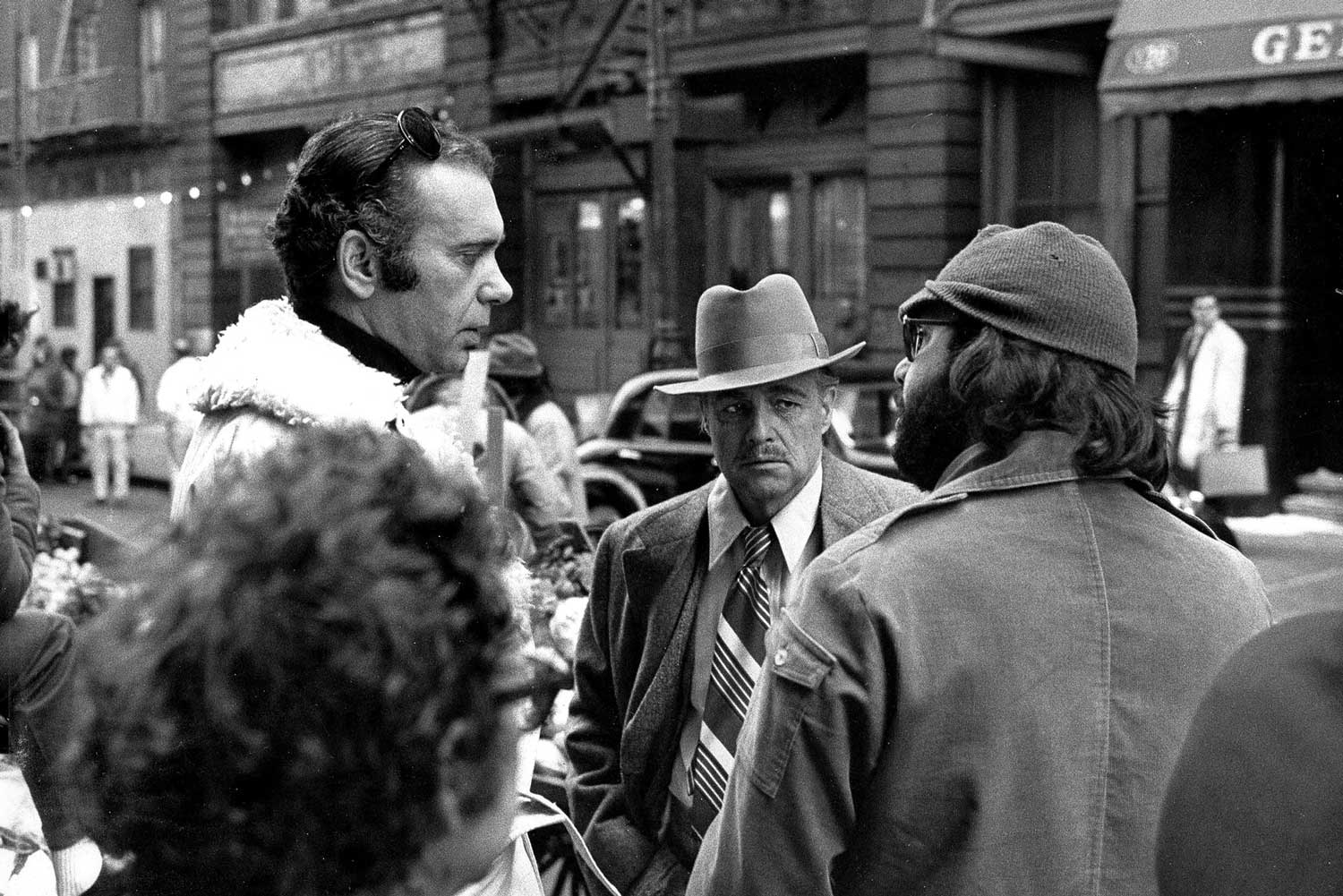
On set with Marlon Brando, as Don Vito Corleone, Francis F. Coppola to the right of the frame and Albert S. Ruddy to the left (From the Everett Collection/vanityfair.com)
Iconoclast to Icon
One aspect of the Royal Oak that is oftentimes overlooked in its significance is the price of the watch at launch, which was 3,750 Swiss francs— more than the cost of 10 Rolex Submariners and more than time and date-only equivalent wristwatches from Patek Philippe and Vacheron Constantin in gold. In fact, the Royal Oak actually cost the same as a Jaguar XJ6 in 1972. Yes, that’s right, a steel sports watch was the same price as a British luxury vehicle. Much can be made about the extraordinary finish, the complex case construction, the beauty of the ultra thin caliber 2121 beating within, but the truth is, the price itself was an incredible provocation.
Says Michael Friedman, “Imagine it’s the third year into the Quartz Crisis, and you also have a global economic crisis brought on by soaring oil prices. Most brands are responding by lowering the prices of their watches and Audemars Piguet launches the most expensive and exquisitely finished steel watch ever made with the most radical design. Of course, we were challenged but this was precisely the right watch at the right time.”
Says François-Henry Bennahmias, “That is the strength of Audemars Piguet. We are never afraid of a challenge. The only way to respect the past is to create the future courageously.”
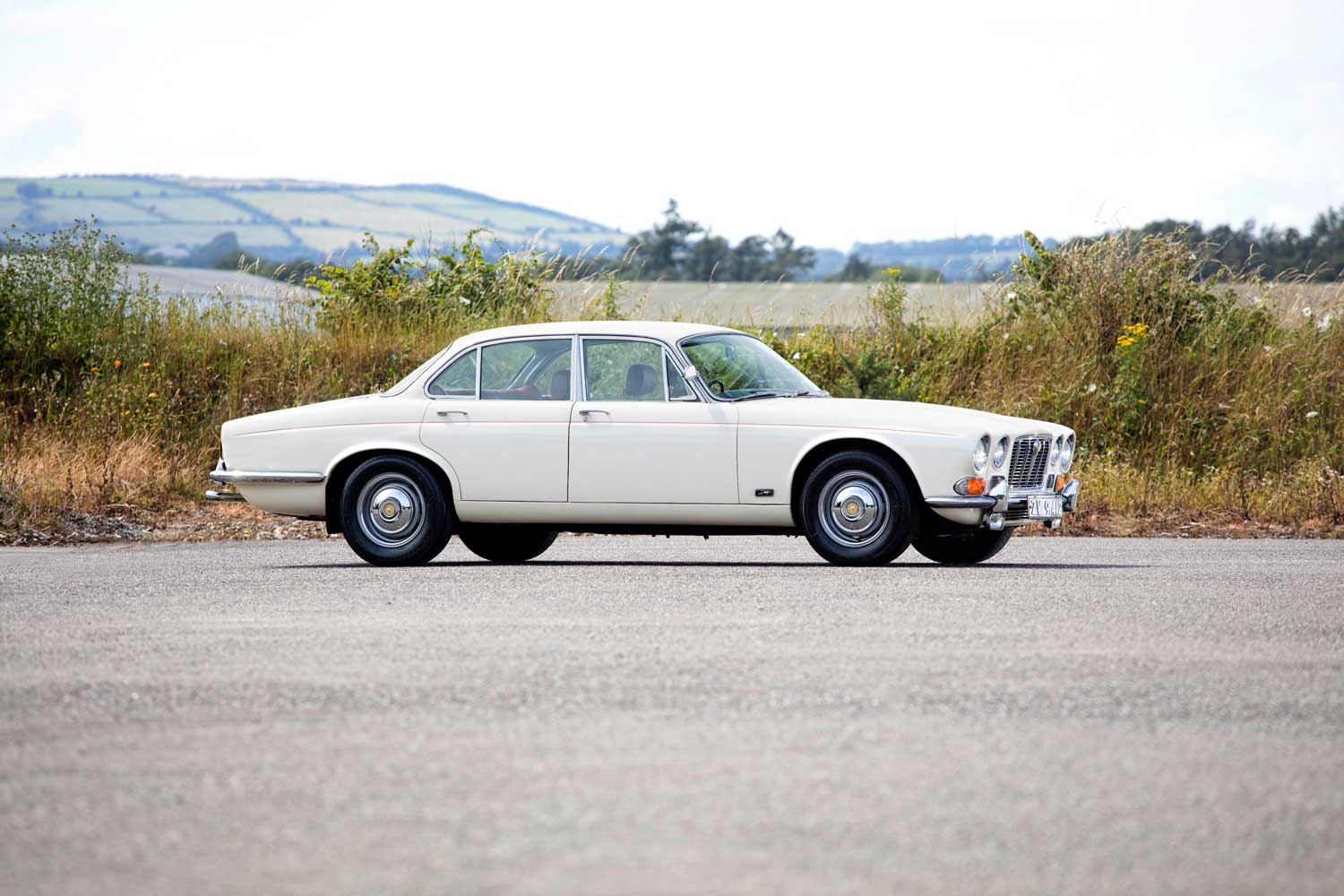
3,750 Swiss francs— the cost of a Jaguar XJ6 in 1972 was the same as that of the Royal Oak at launch (Image: bonhams.com)
Soon, legendary playboys and captains of industry like Agnelli, royals like King Juan Carlos of Spain and Prince Michael of Kent, and fashion designers like Karl Lagerfeld would be found with the emblem of ultimate modernity, sports chic identity and revolutionary design on their wrists. Say Friedman, “People always say that the Royal Oak got off to a slow start, but it is not exactly the case. While we know the watch had a following in Italy, we deep-dived in our archives over the past years and we saw a lot of success for it in countries like Germany and even Switzerland.” Understandable, considering the contributions to playboy culture made by notable Germans such as the famous Gunter Sachs, who once dropped hundreds of roses over Brigitte Bardot’s house in his efforts to seduce her. The ploy succeeded and he married her in 1966 and divorced her in 1969.
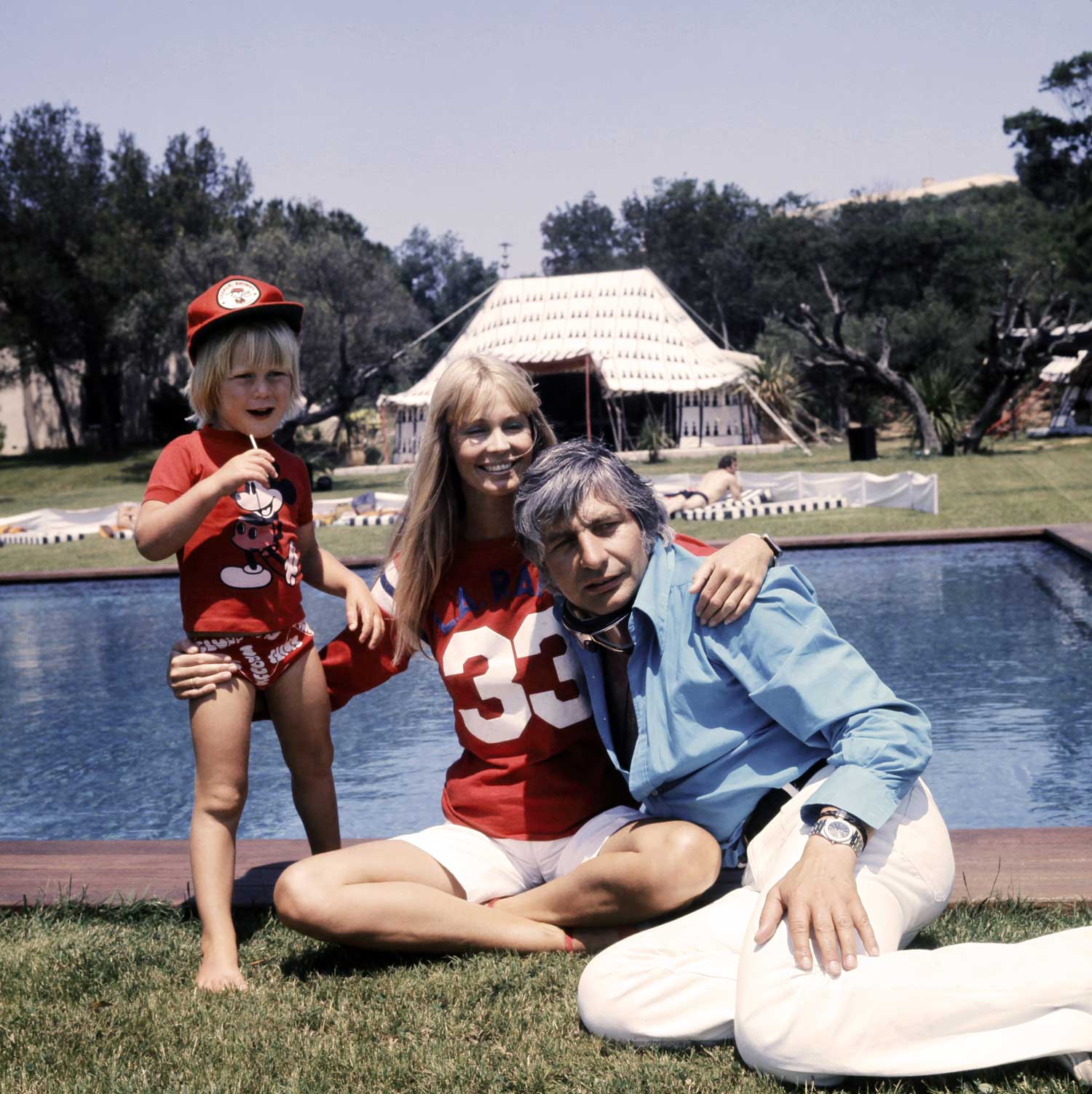
A photo taken on June 26, 1975 shows German multi-millionaire industrialist Gunter Sachs and his family, his son and wife Mirja in Saint-Tropez, southern France; on his wrist is a steel 5402, which reaffirms Gunter Sachs' as an early adopter and tastemaker (Image: STRINGER/AFP via Getty Images)
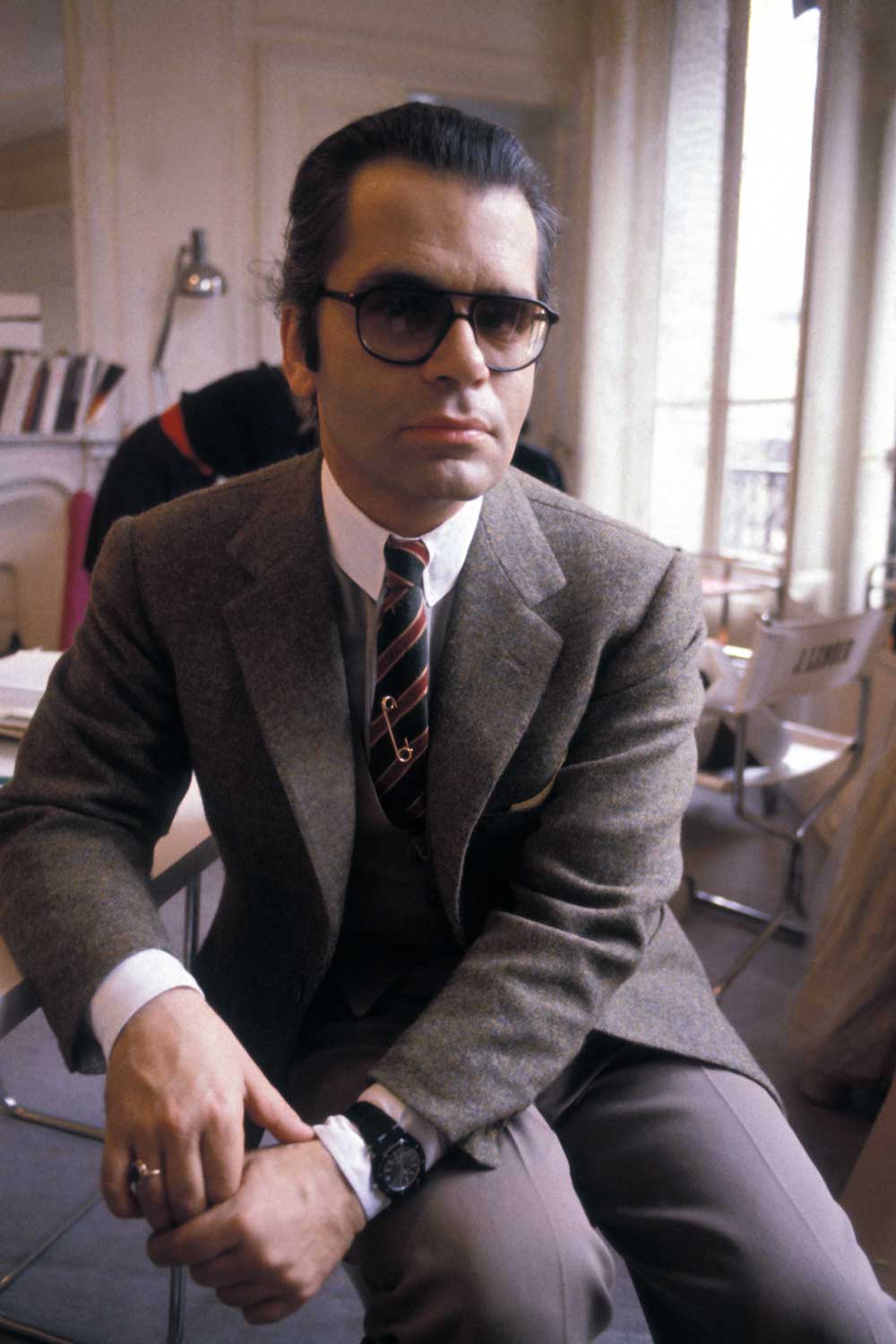
Portrait of Karl Lagerfeld, circa 1970, in Paris, France. On his left wrist is the unmistakable Royal Oak, which he had specially blacked out to suit his own style (Photo by Daniel SIMON / Gamma-Rapho via Getty Images)
In the modern era, it has clearly inspired the Bvlgari Octo Finissimo, the Czapek Antarctique, the Moser Streamliner, the Laurent Ferrier Grand Sport, the Parmigiani Fleurier PF, the Bell & Ross BR 05, and many more. So avidly sought after is any Royal Oak today that the 15202, the model most faithful to the original 5402, commands a secondary market premium of 100,000 US dollars. But more than this, the Royal Oak’s current success has actually lifted the desire for all other watches in the integrated bracelet category. Says Audemars Piguet brand ambassador, GPHG jury member and founder of Wristcheck, Austen Chu, “It’s clear that other brands like Vacheron Constantin with its Overseas have benefited from the fact that is so hard to buy a Royal Oak today because of the crazy demand.” But more importantly, the Audemars Piguet Royal Oak created, defined and, to this day, dominates the single most important and universally desired category in luxury watches — the integrated bracelet sports chic timepiece.

Ahmed Rahman (a.k.a. Shary), @time_mechanic

Austen Chu, founder and CEO of Wristcheck

Three varying executions of the 39mm Royal Oak 15202, the reference that most closely resembles the 1972 5402ST
Ditto the entire story of the Royal Oak — from the minute Royal Oak mini to the incredible 42mm Minute Repeater Supersonnerie with everything else in between: the bombastic 44mm Grande Complication incorporating a minute repeater, split seconds chronograph and perpetual calendar replete with a sapphire dial; the sublime and elegant 41mm Flying Tourbillon; the iconic 41mm Perpetual Calendar with weeks of the year display; the 41mm Selfwinding Perpetual Calendar Ultra Thin that resulted from the experimental RD#2, at the time of its launch the world’s thinnest automatic perpetual calendar; the 41mm and 38mm Selfwinding Chronographs; the 41mm and 37mm Double Balance Wheel Openworked watches; the 41mm automatic time and date reference 15500; the ravishing 39mm Selfwinding “Jumbo” Extra-Thin ref. 15202, a faithful homage to the original 5402; the mid-sized 37mm automatic time and date ref. 15450; and the 34mm automatic time and date watch. It would also not be possible to look at the Royal Oak’s lasting impact and many successful guises without including the Royal Oak Offshore, the larger sized and more aggressive version introduced in 1993 designed by Emmanuel Gueit. This family also boasts a wide range of complications from a grande complication to a tourbillon chronograph, to a flying tourbillon, to a chronograph model, to a diver. The Royal Oak Concept brings an ultra-futurist avant-gardism to the Royal Oak’s iconography and is today created in a 44mm Tourbillon Chronograph and Tourbillon GMT, a 42mm Flying Tourbillon as well as several models that are 38.5mm in diameter.
Says Michael Friedman, “The point to all this is that over the last half century, the Royal Oak has gone on to be extrapolated in different sizes and complications with different materials and designs, but every one of these timepieces is somehow iconic. It is immediately identifiable and audacious and feels charged with the same power and originality as the very first Royal Oak born 50 years ago.”

44mm Royal Oak Openworked Grande Complication Ref. 26065IS.OO.1105IS.01
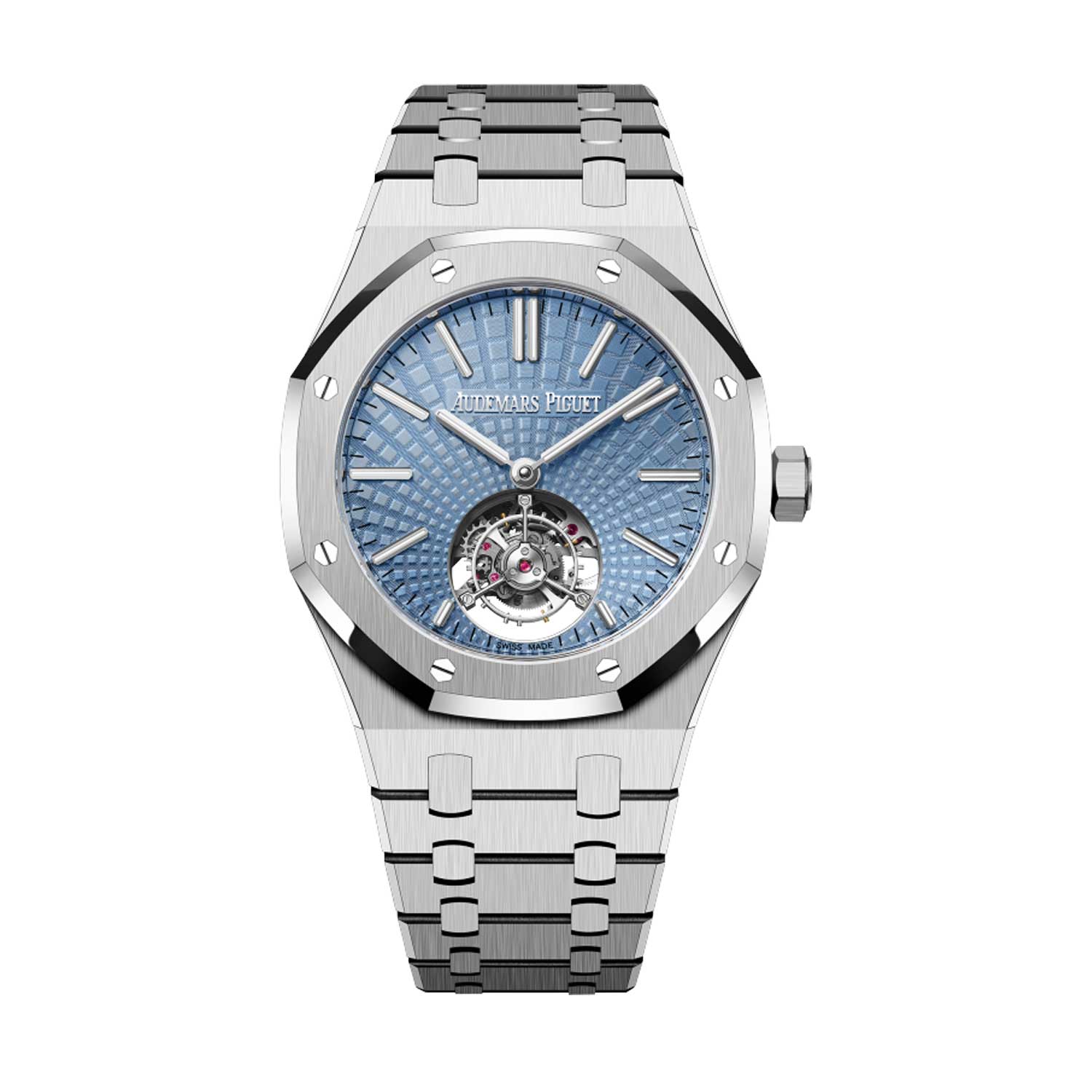
41mm Royal Oak Selfwinding Flying Tourbillon Ref. 26530PT.OO.1220PT.01
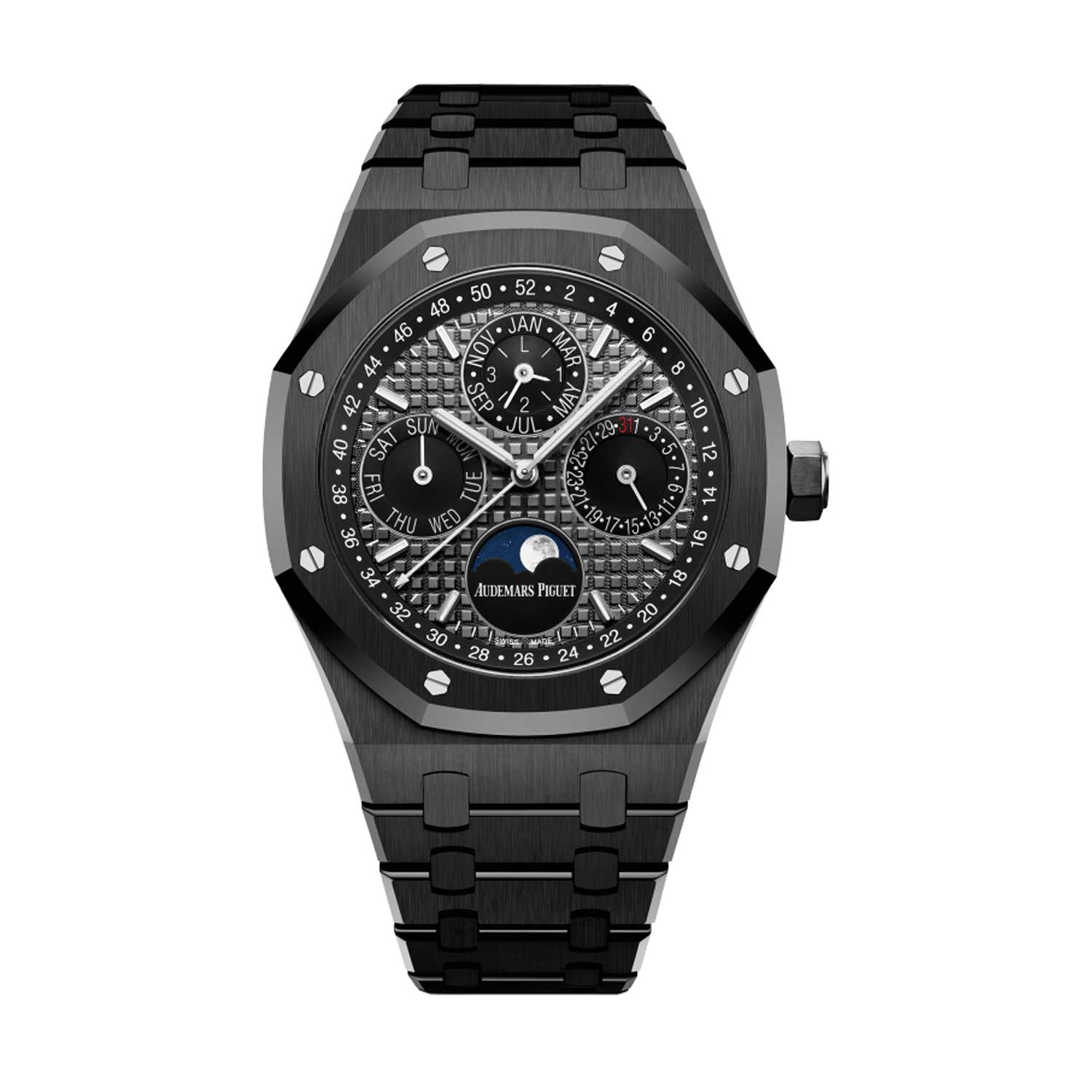
41mm Royal Oak Perpetual Calendar Ref. 26579CE.OO.1225CE.01
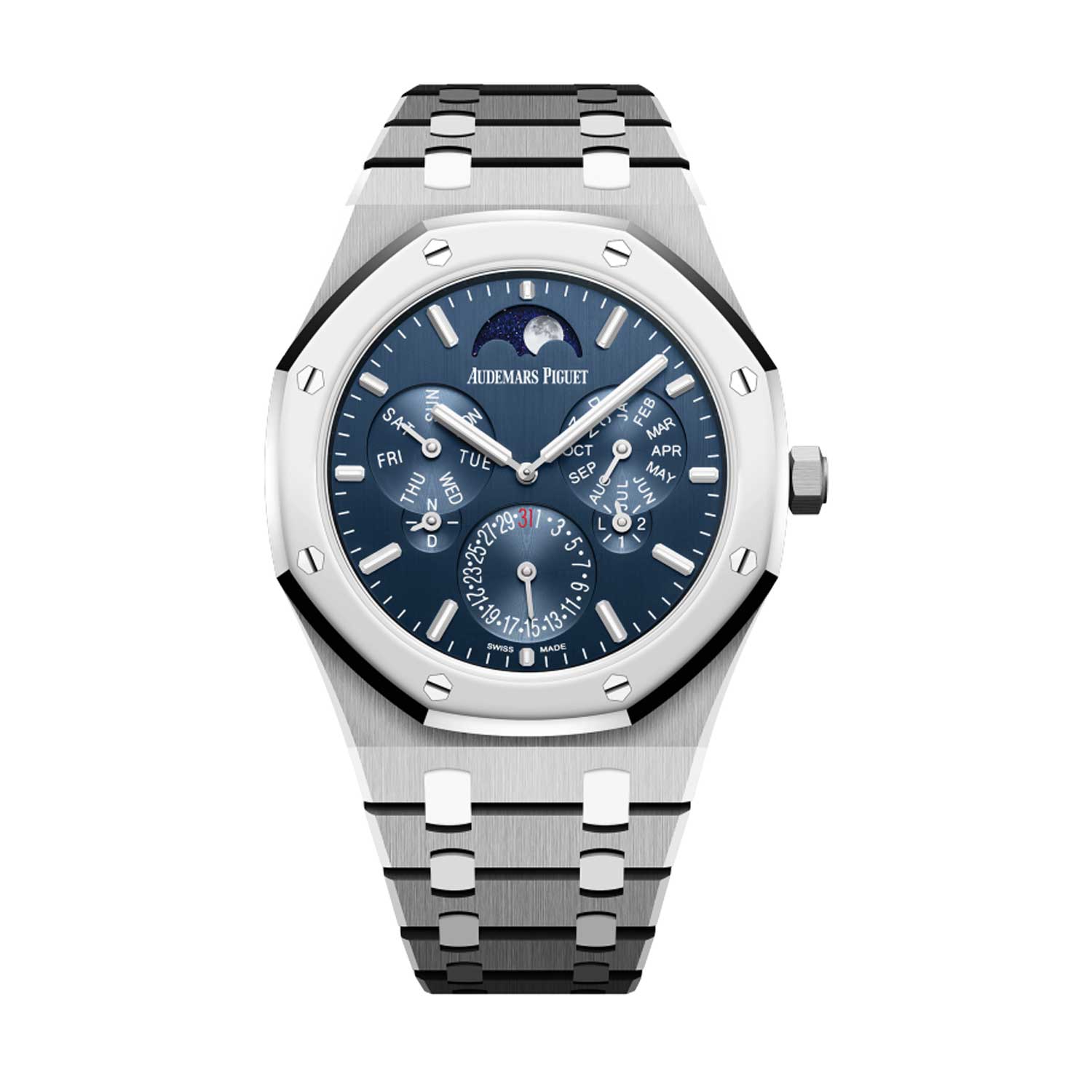
41mm Royal Oak Selfwinding Perpetual Calendar Ultra-Thin Ref. 26586IP.OO.1240IP.01

Royal Oak Selfwinding Chronograph Ref. 26331ST.OO.1220ST.01

41mm Royal Oak Double Balance Wheel Openworked Ref. 15416CE.OO.1225CE.01

41mm Royal Oak Selfwinding Ref. 15500ST.OO.1220ST.01
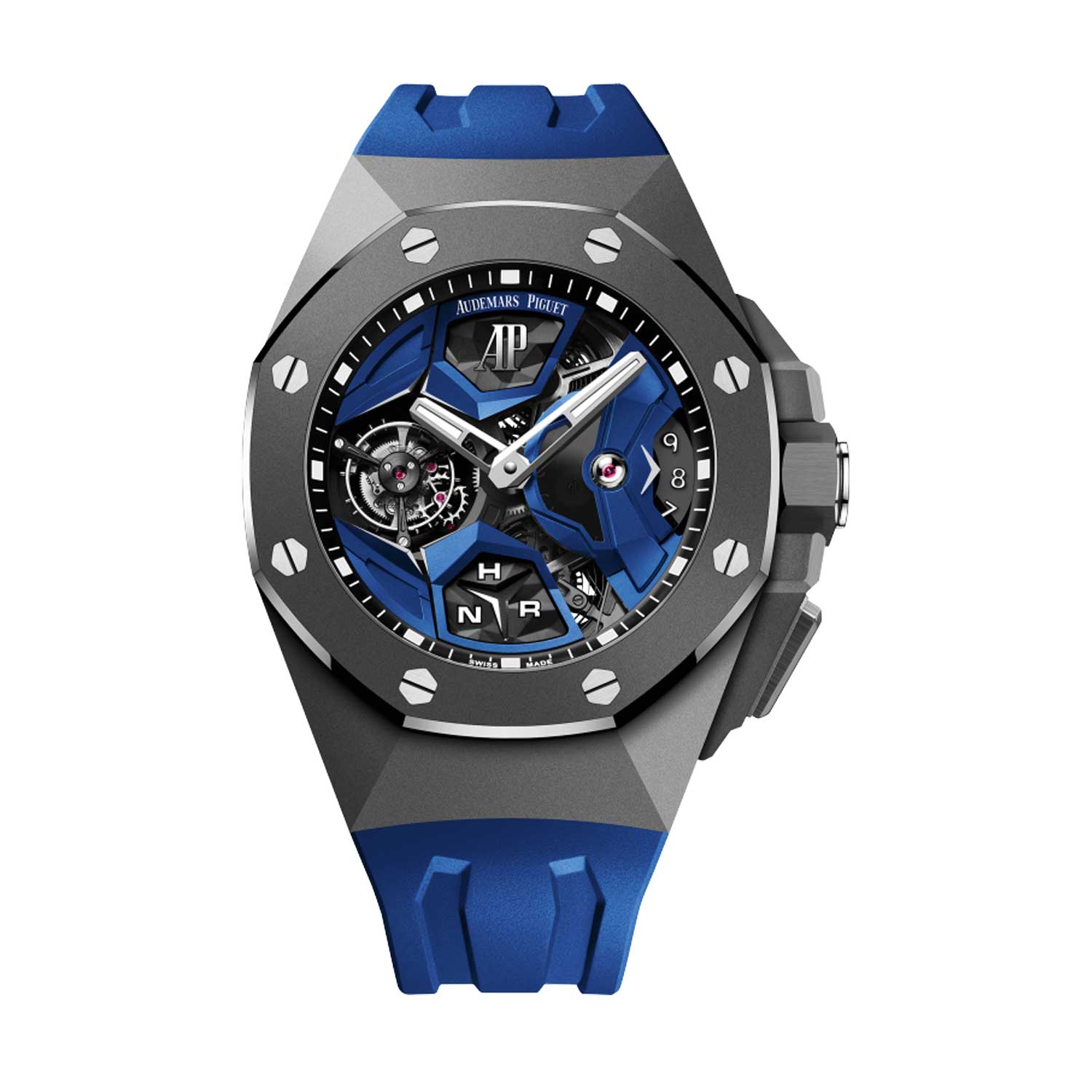
44mm Royal Oak Concept Flying Tourbillon Gmt Ref. 26589IO.OO.D030CA.01
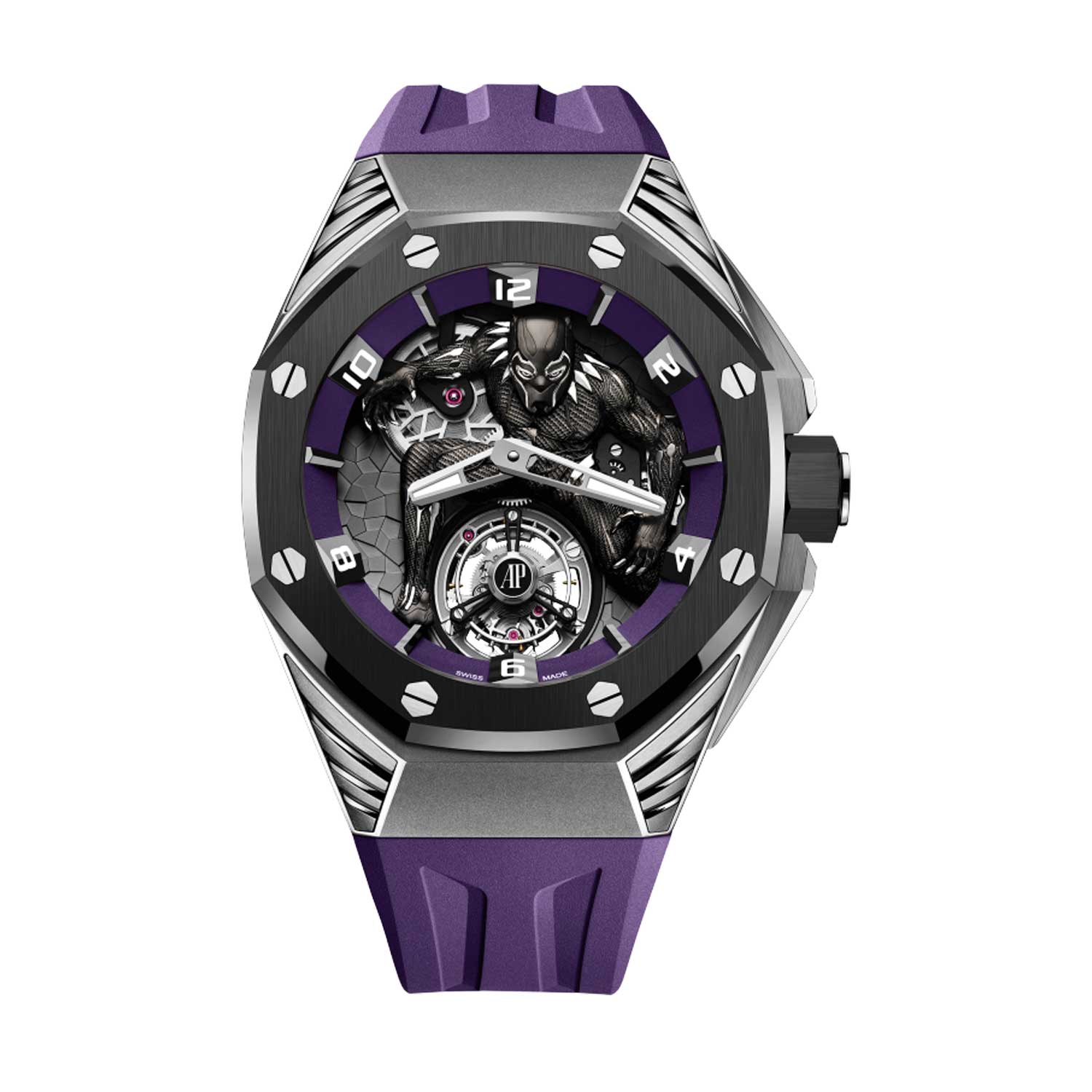
42mm Royal Oak Concept “Black Panther” Flying Tourbillon Limited Edition Of 250 Ref. 26620IO.OO.D077CA.01
Blazing Their Own Trail
Through the majority of principal photography, Coppola lived in constant terror of being fired. When Evans and other studio execs saw Gordon Willis’ footage, which was lit to be darker than any film that had come before and that contrasted in particular with the ultra bright Kodachrome look of the era, they thought that the cinematographer and director had lost their minds. Even Evans’ number two, Peter Bart, a rare Coppola supporter, had to admit he felt that he was “wearing sunglasses” to view the dailies. Things reached a dire nexus when, according to Coppola, 15 key members of the production team including the film’s editor, complained to the studio that Coppola was deranged. But an astute student of Machiavelli, Coppola preemptively informed every one of them that they were fired before the decision to dispense with him could be reached.
Terrified by both the murkiness of the dailies and the stories of Coppola’s unhinged behavior, Evans started to seek out alternatives, and at one point, was going to hand over the reins to Elia Kazan until Peter Bart, in a brilliant ploy to rescue Coppola, convinced his boss that Kazan had dementia. In contrast, the cast of the film seemed to be having an absolute blast. James Caan, Robert Duvall and Brando engaged in a high level competition of mooning each other. At one point, during filming for the Italian Wedding scene, Brando reputedly mooned up to 500 extras, prompting one woman to exclaim to Robert Duvall, “Mr. Duvall, you’re fine, but did you see the balls on Brando?”
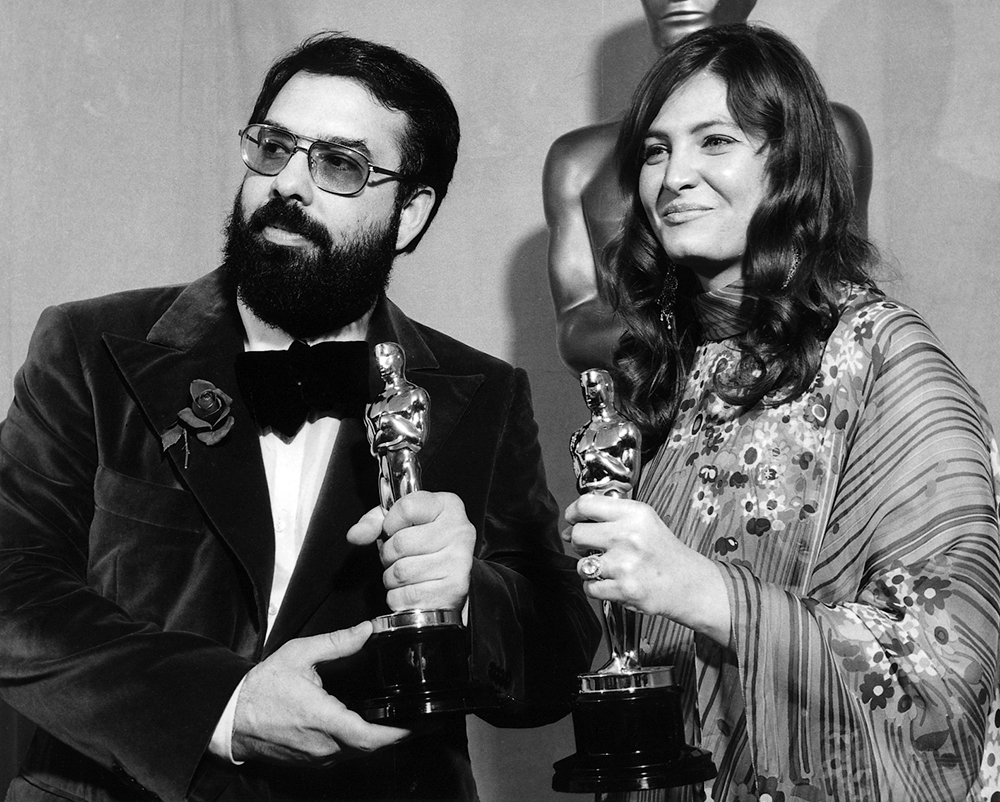
The Godfather won a total of 11 awards at the 45th Oscars including Best picture; shown above is Francis F. Coppola and Dorothy Puzo won the Oscar for Adapted Screenplay; fun fact, Marlon Brando did not turn up to the ceremony (Image: AMPAS)
The Godfather made a star of Al Pacino and elevated Coppola to the status of the most important director of his era. Even the once shunned Brando found his career magically revitalized. At the 45th Academy Awards, The Godfather won Best Picture, Best Director, Best Adapted Screenplay, Best Score, and Marlon Brando won Best Actor for his portrayal of Don Vito Corleone. The cultural impact was massive. The Godfather, like the Royal Oak, would go on to spawn an endless multitude of followers both good and bad, the most significant of which would be Martin Scorsese’s film Goodfellas, Brian De Palma’s Scarface and the revolutionary television series The Sopranos. More importantly, until The Godfather, criminals were never protagonists; that film created the most populist entertainment genre, “the crime family,” outside of the Marvel Universe today.
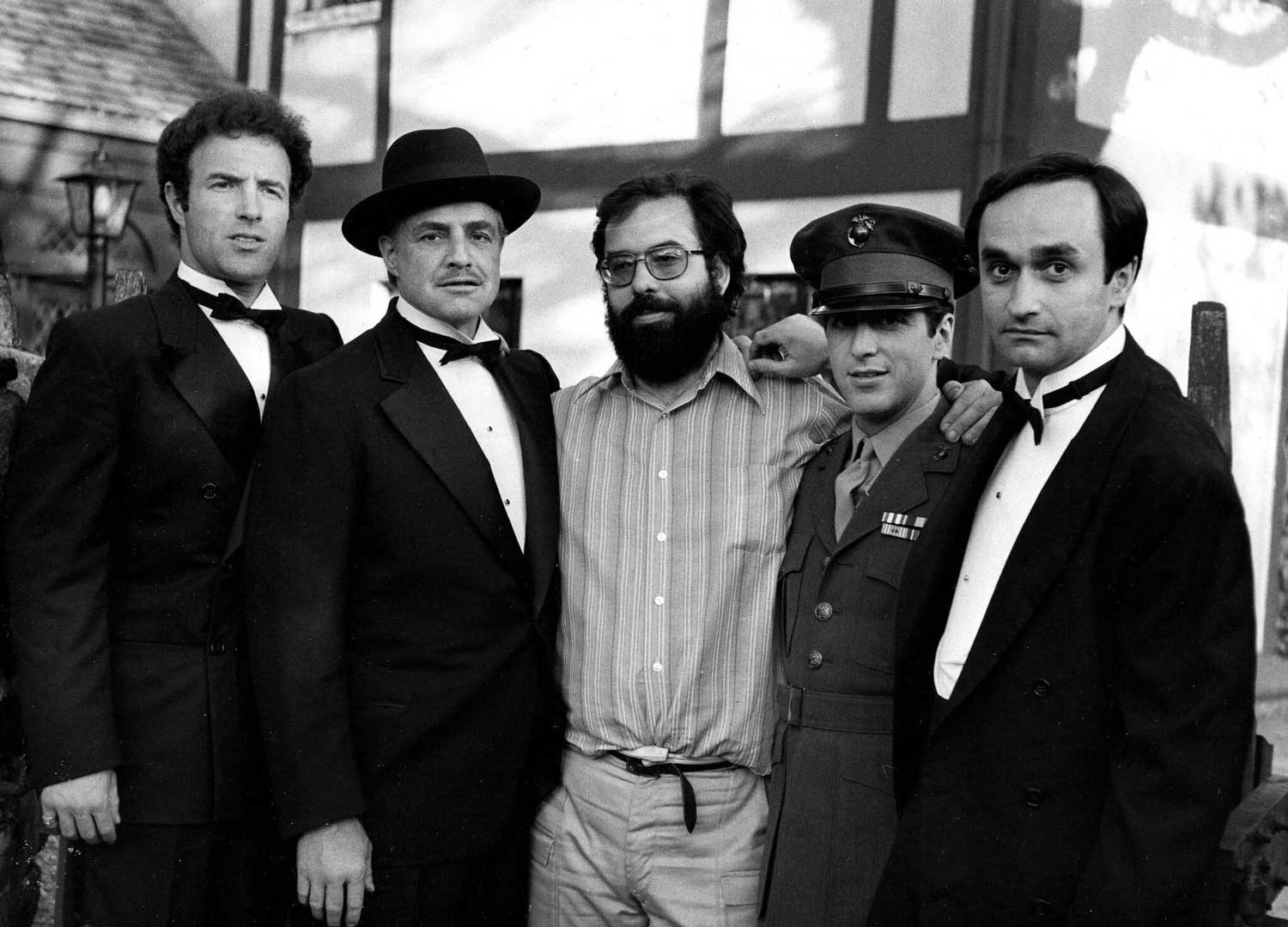
Coppola on set of the first “Godfather” with James Caan, left, Marlon Brando, Al Pacino and John Cazale (Image: Alamy)










